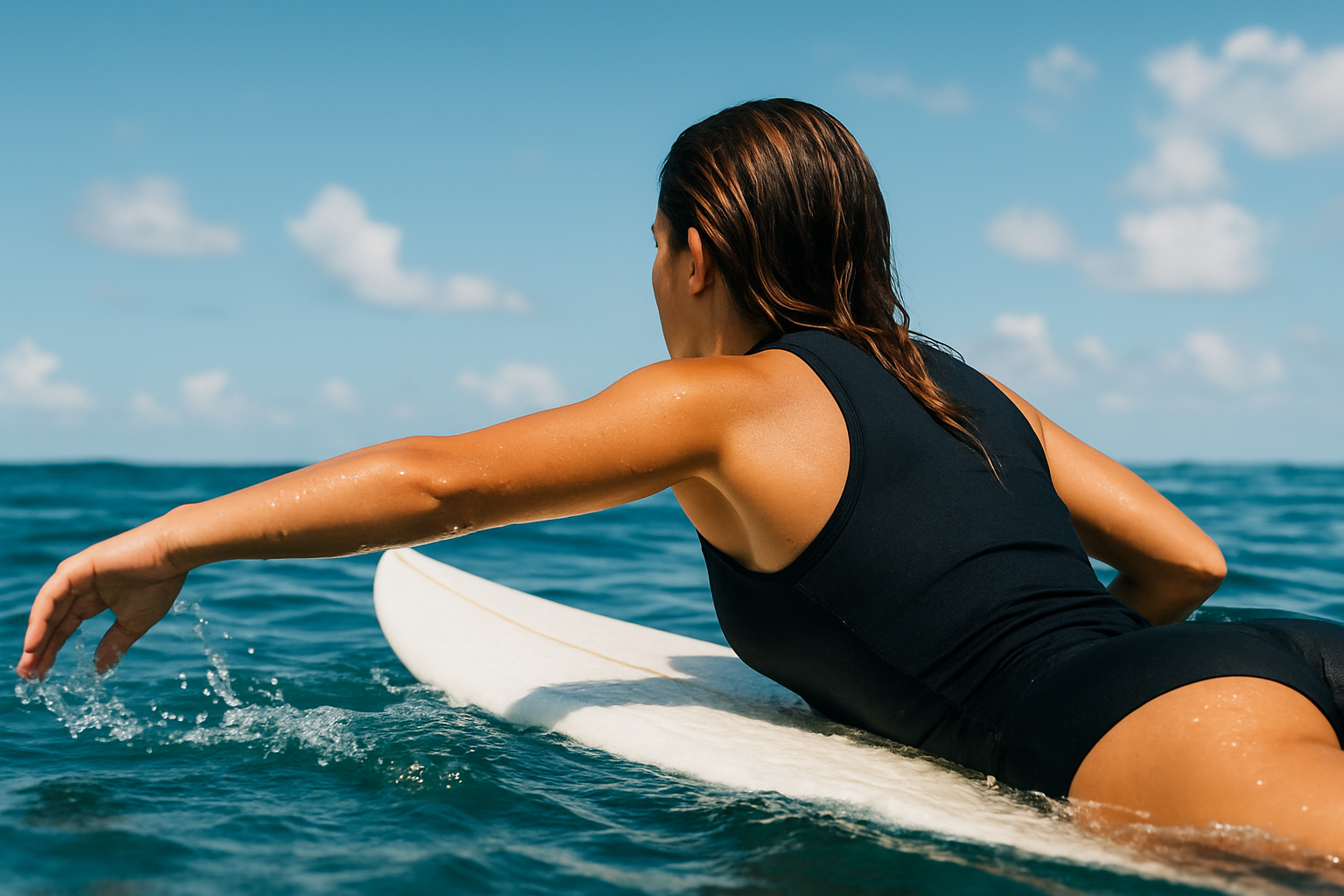If you’ve been dealing with surfer’s elbow (pain on the inside of your elbow), there’s a good chance your wrist and finger flexors are doing most of the heavy lifting. Every paddle stroke, every pop-up, every time you grip your board — those flexor muscles on the inside of your forearm are firing.
Over time, they can become overloaded — especially if the muscles on the other side of your forearm aren’t pulling their weight.
That’s where your wrist and finger extensors come in.
The Balance Between Flexors and Extensors
Think of your forearm like a seesaw.
- On one side: the flexors (closing your fist, pulling your wrist down, gripping).
- On the other: the extensors (opening your hand, lifting your wrist, stabilising your grip).
If the flexors dominate, the seesaw tips. That imbalance creates extra strain at the tendon attachments on the inside of your elbow — the exact spot that flares up with surfer’s elbow.
By strengthening the extensors, you bring the seesaw back into balance, protecting your elbow and improving performance.
Why Extensor Training Helps
Load sharing: Strong extensors take pressure off the flexors, reducing tendon overload (Chaler et al., 2025).
Grip endurance: Balanced muscles mean you can paddle longer before fatigue sets in.
Joint stability: Extensors support the wrist and elbow during dynamic surf movements (Takeda et al., 2025).
Injury prevention: A balanced forearm lowers the risk of recurring flare-ups.
What the Research Shows
- Muscle imbalance predicts relapse: Stronger flexors compared to extensors are linked to recurring elbow pain. That’s why clinicians measure flexor–extensor strength ratios when planning rehab (Chaler et al., 2025).
- Forearm position matters: In pronation (palm down), extensor activity rises. In supination (palm up), flexors dominate. Training both positions ensures all aspects of tendon loading are addressed (Takeda et al., 2025).
- Eccentric loading is key: Exercises where muscles lengthen under load stimulate tendon healing and restore load tolerance (JS Performance Lab, 2023).
How This Shapes Rehab
That’s why my 12-week Surfer’s Elbow Rehab Program includes:
- Strengthening for both flexors and extensors to restore balance.
- Grip work in different forearm positions to mimic paddling and board handling.
- Eccentric loading strategies to promote tendon recovery and resilience.
This approach makes sure both sides of the seesaw are trained — so your flexors and extensors share the work, protect your elbow, and keep you strong in the water.
✅ Takeaway: Training your wrist and finger extensors isn’t just about getting stronger. It’s about restoring balance, protecting your elbow, and giving you more time in the surf doing what you love.
References
Chaler, J., De La Fuente, C., & colleagues. (2025). Strength ratios and relapse prediction in chronic elbow pain: An isokinetic study. Journal of Shoulder and Elbow Surgery. Link
Takeda, Y., Nakagawa, T., & colleagues. (2025). Forearm rotation influences wrist flexor and extensor muscle activity: An EMG analysis. Journal of Orthopaedic Surgery and Research, 20(1), 1–10. Link
JS Performance Lab. (2023). Understanding epicondyle tendinitis: Causes and eccentric loading for recovery. Retrieved from Link

Be The First To Comment